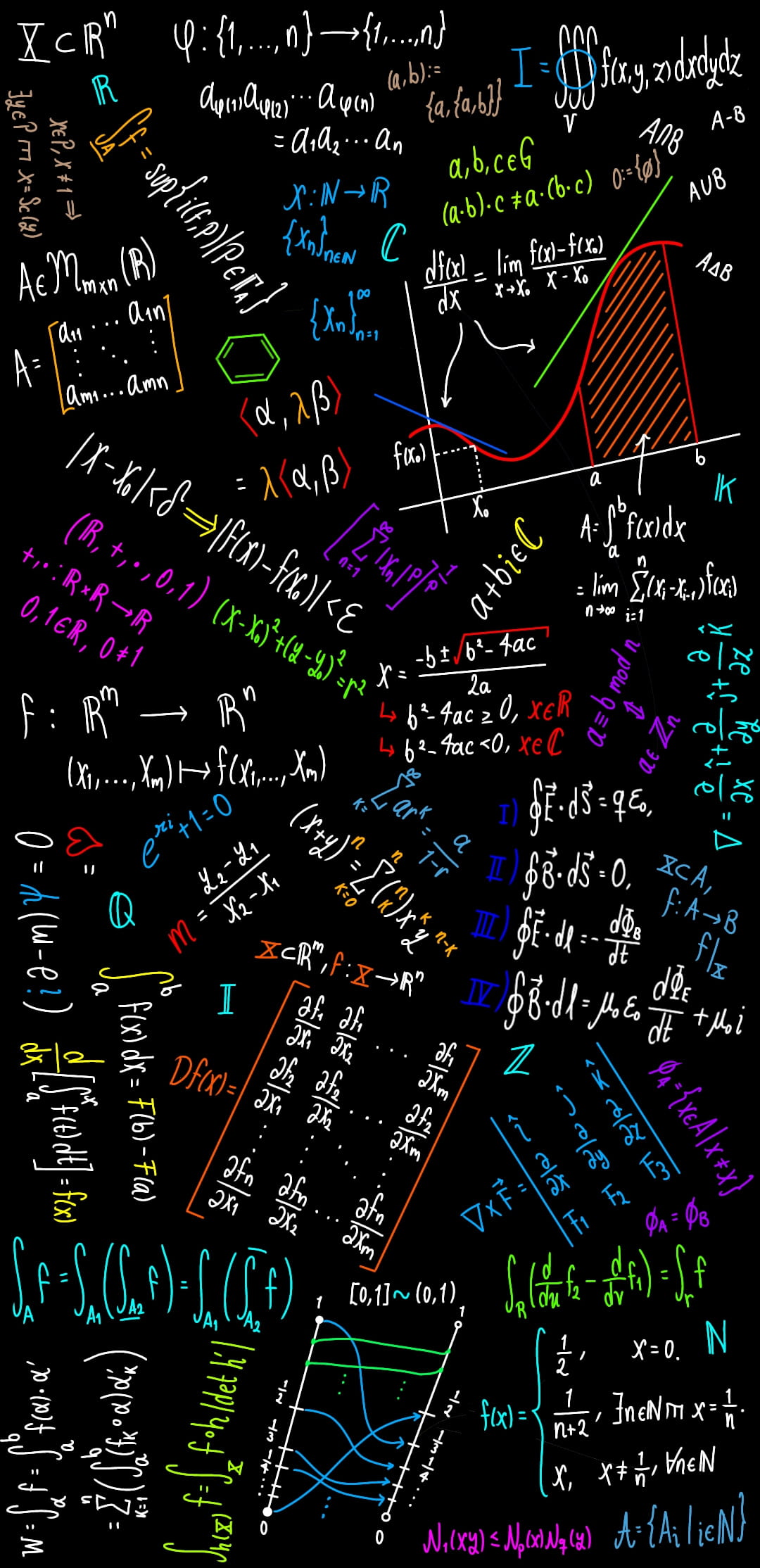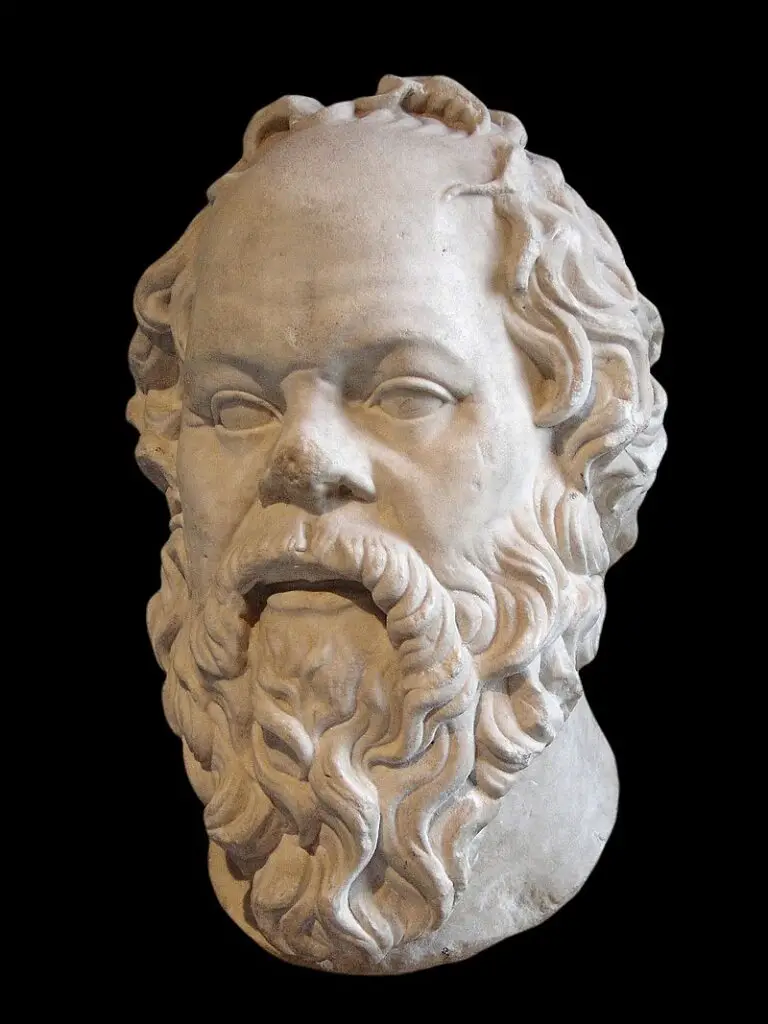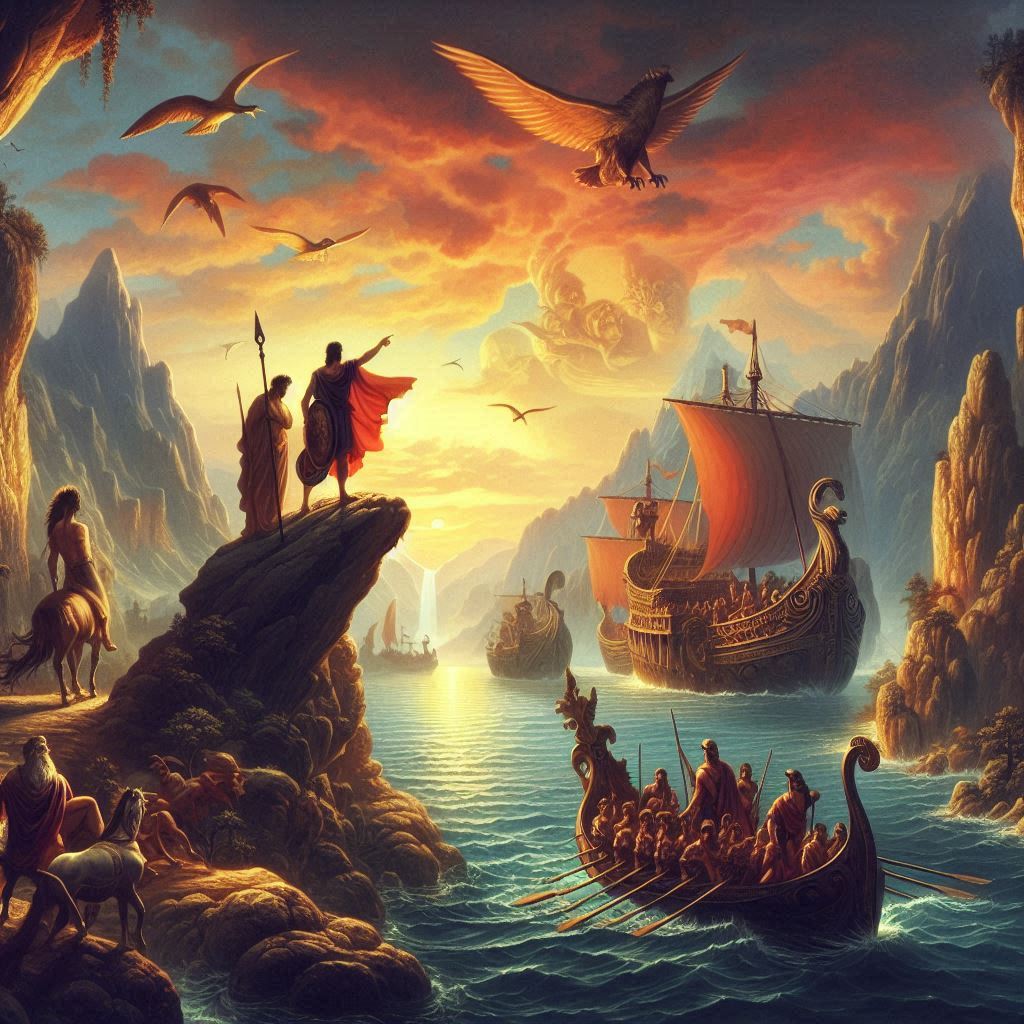The history of physics spans centuries, evolving from ancient philosophical inquiries to modern scientific methodologies. Ancient Greeks, like Thales and Pythagoras, laid foundations. In the Middle Ages, scholars like Galileo and Kepler contributed to observational astronomy. Newton’s laws of motion and gravity marked a turning point in the 17th century. The 19th century saw developments in electromagnetism and thermodynamics. Einstein’s theories of relativity reshaped physics in the early 20th century, while quantum mechanics emerged, challenging classical ideas. Advancements continue with discoveries in particle physics, cosmology, and quantum field theory. Physics remains a dynamic field, shaping our understanding of the universe.
Ancient Physics
Ancient physics, rooted in the philosophical inquiries of early civilizations, laid the groundwork for our understanding of the natural world. The journey through ancient physics traverses diverse cultures, from the ancient Greeks to Chinese and Indian thinkers, each contributing unique perspectives that shaped the intellectual landscape of their time.
In ancient Greece, a cradle of philosophical thought, early physicists were often philosophers seeking to comprehend the fundamental nature of reality. Thales of Miletus, one of the Seven Sages of Greece (c. 624–546 BCE), is credited as one of the earliest thinkers to propose a material substance as the primary element of all things. Thales asserted that water was the fundamental substance, a concept marking the birth of early materialistic philosophy.
Anaximander, a student of Thales, expanded on these ideas, proposing the existence of a boundless, indefinite substance called the “apeiron” as the source of all things. Anaximander’s cosmology represented a departure from anthropocentric views, introducing abstract concepts to explain the origin and nature of the universe.
Pythagoras, renowned for his contributions to mathematics, also influenced ancient physics. While Pythagorean philosophy emphasized the significance of numbers, it extended into ideas about the harmony of the cosmos, suggesting a mathematical order underlying the physical world.
Empedocles introduced the concept of the four classical elements—earth, water, air, and fire—formulating a theory that all substances were composed of various combinations of these elements. This early attempt at classification laid the groundwork for later developments in understanding matter and its transformations.
However, it was Aristotle, in the 4th century BCE, who exerted profound influence on ancient physics. Aristotle’s work, particularly his “Physics” and “On the Heavens,” outlined a comprehensive system that dominated Western thought for centuries. He proposed a geocentric model of the universe, with celestial bodies moving in circular orbits. Aristotle’s ideas on natural motion, the elements, and the hierarchy of substances became foundational to medieval scholastic thought.
Simultaneously, in ancient China, thinkers like Mozi and Zhuangzi contemplated the nature of the physical world. Mozi, in the 5th century BCE, contributed to early Chinese physics with his ideas on optics and the nature of light. Zhuangzi, in the 4th century BCE, engaged in philosophical dialogues exploring the relativity of perspectives, challenging fixed notions about the natural world.
In ancient India, the pursuit of understanding reality and the cosmos was deeply ingrained in philosophical and religious traditions. The Vedic texts, including the Rigveda, contained hymns expressing reverence for natural forces and cosmic elements. The Upanishads delved into metaphysical questions, contemplating the nature of Brahman as the ultimate reality.
Around the 6th century BCE, the Indian philosopher Kanada formulated the atomic theory, proposing that matter consists of indivisible particles called “anu.” Kanada’s ideas, while rooted in philosophy, offered an early glimpse into the microscopic understanding of matter.
The ancient Greek atomist philosophers, Leucippus and Democritus, independently developed a similar atomic theory around the 5th century BCE. They posited that matter was composed of indivisible particles called atoms, differing in shape and size. Though their ideas lacked empirical evidence, the atomic hypothesis foreshadowed future developments in the understanding of matter.
Archimedes, a towering figure in ancient Greek physics and mathematics, made significant contributions to understanding buoyancy, the lever, and the concept of specific gravity. His work laid the foundation for principles that would later become integral to the field of fluid mechanics.
The transition from ancient to medieval times witnessed the preservation and transmission of ancient knowledge, particularly through Islamic scholars. Figures like Al-Kindi, Al-Farabi, and Ibn Sina (Avicenna) played pivotal roles in preserving and expanding upon the works of Aristotle and other ancient thinkers. Their commentaries and innovations paved the way for the Renaissance and the revival of interest in ancient texts.
Classical Mechanics (17th – 19th Century)
The development of classical mechanics from the 17th to the 19th century represents a transformative period in the history of physics. Anchored in the works of luminaries such as Galileo Galilei, Johannes Kepler, and culminating in the groundbreaking contributions of Sir Isaac Newton, classical mechanics provided a comprehensive framework to understand the motion of objects and the forces that govern them.
Galileo Galilei, often regarded as the father of modern physics, laid the groundwork for classical mechanics through empirical observations and systematic experimentation. In the early 17th century, Galileo’s studies of falling bodies led to the formulation of the law of uniform acceleration. He demonstrated that in the absence of air resistance, all objects near the Earth’s surface fall with a constant acceleration, irrespective of their mass.
Galileo’s revolutionary use of the telescope allowed him to make celestial observations that challenged prevailing astronomical beliefs. He observed the moons of Jupiter, the phases of Venus, and the irregular surface of the Moon, providing empirical evidence that supported the heliocentric model proposed by Copernicus.
Johannes Kepler, building on the astronomical observations of Tycho Brahe, formulated the three laws of planetary motion. Kepler’s laws described the elliptical orbits of planets, the equal area law, and the relationship between a planet’s orbital period and its distance from the Sun. These laws provided a mathematical foundation for understanding the motion of celestial bodies and contributed to the eventual development of Newtonian mechanics.
The crowning achievement of classical mechanics came in the form of Sir Isaac Newton’s Principia Mathematica, published in 1687. Newton’s laws of motion and the law of universal gravitation revolutionized physics by providing a unified framework to explain both terrestrial and celestial motion.
Newton’s first law of motion stated that an object at rest stays at rest, and an object in motion stays in motion with a constant velocity unless acted upon by a net external force. The second law introduced the concept of force as the product of mass and acceleration, while the third law asserted that for every action, there is an equal and opposite reaction.
Newton’s law of universal gravitation described the force of attraction between two masses, providing a mathematical formula that explained the observed motions of planets and moons. The elegance and generality of Newton’s laws elevated classical mechanics to a foundational status, applicable to a wide range of phenomena.
The mathematical precision introduced by Newtonian mechanics allowed scientists to predict and explain the motions of celestial bodies, the behavior of projectiles, and the dynamics of objects on Earth. The success of classical mechanics in describing macroscopic phenomena fostered a deterministic worldview, wherein the future behavior of a system could be precisely predicted given its initial conditions and the forces acting upon it.
The 18th century saw the refinement and expansion of classical mechanics. Leonhard Euler, Joseph Lagrange, and William Rowan Hamilton made significant contributions to the mathematical formalism of mechanics. Lagrange, in particular, developed analytical mechanics, a powerful mathematical framework that expressed the equations of motion in terms of generalized coordinates and generalized forces.
Pierre-Simon Laplace extended classical mechanics to the study of celestial mechanics and introduced the concept of determinism in his work “Celestial Mechanics.” Laplace envisioned a universe governed by deterministic laws, where the future states of all particles could be precisely calculated if their initial conditions were known.
The concept of energy conservation emerged as a fundamental principle in classical mechanics during the 18th century. The work of Daniel Bernoulli on fluid dynamics, the experiments of John Smeaton on waterwheels, and the investigations of Benjamin Thompson (Count Rumford) on heat all contributed to the understanding that mechanical work could be transformed into heat and vice versa, with the total energy of a closed system remaining constant.
The 19th century witnessed further advancements in classical mechanics, with the work of Augustin-Louis Cauchy, George Green, and Carl Gustav Jacob Jacobi contributing to the development of the principle of least action. Hamiltonian mechanics, formulated by William Rowan Hamilton, provided an alternative approach to Lagrangian mechanics, introducing the concept of Hamiltonian energy.
The wave-particle duality of light and the formulation of the electromagnetic theory by James Clerk Maxwell represented a challenge to the purely mechanical worldview of classical mechanics. Maxwell’s equations successfully unified electricity and magnetism, describing these phenomena as manifestations of a single electromagnetic force.
Despite the successes of classical mechanics, anomalies began to emerge in the late 19th century. The Michelson-Morley experiment, designed to detect the Earth’s motion through the ether, yielded unexpected results that paved the way for the revolutionary ideas of Albert Einstein.
Wave Optics and Thermodynamics (18th – 19th Century)
The 18th and 19th centuries witnessed remarkable developments in wave optics and thermodynamics, two branches of physics that profoundly influenced our understanding of light and heat. These centuries were marked by the efforts of scientists such as Thomas Young, Augustin-Jean Fresnel, and James Clerk Maxwell in the realm of wave optics, while thermodynamics saw significant contributions from figures like Sadi Carnot, Rudolf Clausius, and Lord Kelvin.
Wave optics, as a field of study, gained prominence in the early 19th century with the famous double-slit experiment conducted by Thomas Young in 1801. Young’s experiment provided compelling evidence in support of the wave nature of light, challenging the prevalent corpuscular theory associated with Isaac Newton. Young demonstrated that light exhibited interference patterns when passing through two closely spaced slits, suggesting wave-like behavior.
Augustin-Jean Fresnel further advanced wave optics through his wave theory of light, formulated in the 1810s and 1820s. Fresnel’s work explained various optical phenomena, including diffraction and polarization, by treating light as transverse waves. His model successfully accounted for observations that the corpuscular theory struggled to explain, solidifying the acceptance of the wave nature of light.
The wave theory faced opposition initially, notably from the adherents of the corpuscular theory, but with the advent of Fresnel’s mathematical descriptions, wave optics gained widespread acceptance. By the mid-19th century, the works of Young and Fresnel laid the foundation for a comprehensive understanding of light as a wave phenomenon.
James Clerk Maxwell, in the mid-19th century, unified the theories of electricity and magnetism through his set of equations known as Maxwell’s equations. In doing so, he not only provided a theoretical basis for electromagnetic waves but also demonstrated that light itself was a form of electromagnetic radiation. This groundbreaking insight firmly established the wave nature of light and laid the groundwork for the later development of the theory of electromagnetism.
Maxwell’s equations predicted the existence of electromagnetic waves that could propagate through space at the speed of light. Heinrich Hertz experimentally confirmed these predictions in the late 19th century, providing experimental evidence for the existence of electromagnetic waves and verifying Maxwell’s unification of electricity and magnetism.
Simultaneously, in the 19th century, thermodynamics emerged as a distinct branch of physics concerned with the study of heat and its transformation into other forms of energy. The pioneering work of Sadi Carnot laid the theoretical groundwork for the understanding of heat engines and efficiency. Carnot’s reflections on the operation of an ideal heat engine, known as Carnot’s cycle, highlighted the importance of reversible processes and established the concept of the second law of thermodynamics.
Rudolf Clausius, in the mid-19th century, introduced the concept of entropy as a measure of the disorder or randomness of a system. Clausius formulated the second law in terms of entropy, stating that the entropy of an isolated system tends to increase over time. This formulation provided a profound understanding of the directionality of natural processes and the irreversibility of certain transformations.
The development of the kinetic theory of gases in the 19th century, notably advanced by James Clerk Maxwell and Ludwig Boltzmann, contributed significantly to thermodynamics. Maxwell’s distribution of velocities and Boltzmann’s statistical interpretation of entropy provided a microscopic foundation for understanding macroscopic thermodynamic quantities. This linkage between statistical mechanics and thermodynamics deepened our understanding of the microscopic underpinnings of macroscopic thermodynamic behavior.
Lord Kelvin (William Thomson) played a pivotal role in formulating the first and second laws of thermodynamics in a more rigorous mathematical framework. Kelvin’s work extended beyond the theoretical realm, as he made substantial contributions to the practical application of thermodynamics, especially in the field of electrical circuits.
The formulation of the concept of absolute temperature, expressed in Kelvin, and the development of the Kelvin-Planck statement of the second law further solidified the foundations of thermodynamics. Lord Kelvin’s insights were instrumental in the development of the thermodynamic diagram, which became a valuable tool for visualizing and analyzing thermodynamic processes.
The 19th-century advancements in wave optics and thermodynamics not only reshaped our understanding of light and heat but also laid the groundwork for later developments in quantum mechanics and statistical physics. The wave-particle duality of light, as established by wave optics, and the profound insights into heat and energy transformations provided by thermodynamics, set the stage for the 20th-century revolutions in physics. These developments not only enriched our theoretical understanding but also had far-reaching implications for technological innovations and applications in various fields.
Electromagnetism (19th Century)
The exploration of electromagnetism spans centuries, with key developments occurring in the 18th and 19th centuries that laid the foundation for our modern understanding of this fundamental force. Notable figures such as Hans Christian Ørsted, André-Marie Ampère, Michael Faraday, and James Clerk Maxwell played pivotal roles in shaping the principles of electromagnetism.
The journey into the realm of electromagnetism began in earnest in the early 19th century. Hans Christian Ørsted’s accidental discovery in 1820 marked a crucial turning point. While demonstrating the heating effects of an electric current, Ørsted observed that a nearby magnetic compass needle deflected when the current passed through a wire. This accidental observation revealed a fundamental connection between electricity and magnetism, laying the groundwork for the field of electromagnetism.
Building on Ørsted’s discovery, André-Marie Ampère further advanced the understanding of electromagnetism. In the early 1820s, Ampère formulated Ampère’s Circuital Law, which describes the magnetic field produced by a current-carrying conductor. Ampère’s law provided a quantitative relationship between electric current and magnetism, offering a systematic approach to understanding the magnetic effects of electrical currents.
Michael Faraday, a key figure in the development of electromagnetism, made groundbreaking contributions in the 1820s and 1830s. Faraday’s experiments demonstrated the phenomenon of electromagnetic induction. He discovered that a changing magnetic field could induce an electric current in a nearby conductor. Faraday’s law of electromagnetic induction laid the foundation for the generation of electric power in generators, transforming the relationship between electricity and magnetism into a dynamic interplay.
Faraday also introduced the concept of magnetic lines of force to visualize and describe the magnetic field. His intuitive visualizations provided a conceptual framework that greatly aided in understanding the intricate connections between electric and magnetic phenomena. Faraday’s work was pivotal in shaping the path toward a unified theory of electromagnetism.
The synthesis of various empirical findings and laws into a comprehensive theoretical framework became a reality through the work of James Clerk Maxwell. In the mid-19th century, Maxwell developed a set of equations, known as Maxwell’s equations, that elegantly unified the theories of electricity and magnetism. Maxwell’s equations described how electric fields and magnetic fields interact and propagate through space, predicting the existence of electromagnetic waves.
Maxwell’s groundbreaking insight into the nature of electromagnetic waves suggested that light itself was a form of electromagnetic radiation. This unification of optics and electromagnetism transformed our understanding of both fields. Maxwell’s equations also predicted the existence of radio waves, microwaves, and other forms of electromagnetic radiation, setting the stage for technological advancements in communication and technology.
The experimental confirmation of Maxwell’s predictions came with the work of Heinrich Hertz in the late 19th century. Hertz experimentally demonstrated the existence of electromagnetic waves and verified many of Maxwell’s theoretical predictions. The significance of this confirmation cannot be overstated, as it marked the experimental validation of a unified theory that connected electricity, magnetism, and light.
Maxwell’s equations not only provided a theoretical framework for electromagnetism but also laid the foundation for the concept of the electromagnetic field. The understanding that electric and magnetic fields are interrelated and inseparable components of a broader electromagnetic field became a cornerstone of modern physics.
The advent of electromagnetic field theory led to the realization that changing electric fields could induce magnetic fields and vice versa. This reciprocity highlighted the dynamic and interconnected nature of electromagnetic phenomena. It also paved the way for the development of technologies such as transformers, which exploit the principles of electromagnetic induction for various applications.
The late 19th and early 20th centuries saw the practical application of electromagnetism in the development of electrical power systems. Nikola Tesla’s contributions, including the development of alternating current (AC) systems and the induction motor, played a pivotal role in the establishment of the modern electrical power grid. The ability to transmit electrical power over long distances, made possible by transformers and AC systems, revolutionized industries and everyday life.
The electromagnetic spectrum, a concept stemming from the unification of electricity and magnetism, became a crucial tool in understanding diverse forms of electromagnetic radiation. From radio waves to X-rays, each part of the spectrum presented unique opportunities for technological innovation and scientific exploration.
The 20th century further witnessed the development of quantum electrodynamics (QED), a quantum field theory that successfully explained the interaction between matter and electromagnetic fields. Quantum electrodynamics, formulated by scientists such as Paul Dirac, Richard Feynman, and Julian Schwinger, provided a quantum mechanical description of the electromagnetic force, incorporating the principles of quantum mechanics into the framework of electromagnetism.
The application of electromagnetism expanded beyond classical physics into the realm of particle physics. The electromagnetic force is one of the four fundamental forces in the Standard Model of particle physics, governing the interactions between charged particles. The study of electromagnetic interactions at the quantum level deepened our understanding of the fundamental building blocks of matter and the forces that govern their behavior.
Quantum Mechanics (Early 20th Century)
The early 20th century witnessed a revolutionary transformation in the understanding of the microscopic world with the advent of quantum mechanics. Pioneered by brilliant minds such as Max Planck, Albert Einstein, Niels Bohr, Werner Heisenberg, and Erwin Schrödinger, quantum mechanics fundamentally altered the landscape of physics and challenged classical notions of determinism.
The journey into quantum mechanics began with Max Planck’s groundbreaking work on blackbody radiation in 1900. Planck introduced the concept of quantized energy, suggesting that energy could only be emitted or absorbed in discrete packets or “quanta.” This departure from classical physics laid the foundation for a new era, marking the birth of quantum theory.
Albert Einstein further propelled the quantum revolution with his explanation of the photoelectric effect in 1905. Einstein postulated that light behaves as discrete particles or “quanta” of energy, now known as photons. This quantization of light not only explained the observed phenomena but also challenged the wave-particle duality of light, a concept that would later become a central tenet of quantum mechanics.
Niels Bohr, in 1913, introduced the Bohr model of the atom, incorporating quantized electron orbits. Bohr’s model successfully explained the discrete spectral lines observed in hydrogen, providing a quantum-based understanding of atomic structure. However, the Bohr model had limitations and failed to account for more complex atoms, leading to the development of more sophisticated quantum models.
Werner Heisenberg, in 1925, formulated matrix mechanics, a mathematical framework that dispensed with the classical concept of particles having definite trajectories. Heisenberg’s uncertainty principle, a cornerstone of quantum mechanics, asserted that certain pairs of properties, such as position and momentum, could not be precisely simultaneously known. This profound insight challenged classical determinism, introducing an inherent uncertainty at the microscopic level.
Simultaneously, Erwin Schrödinger developed wave mechanics as an alternative formulation of quantum theory. Schrödinger’s wave equation described the behavior of quantum systems in terms of probability amplitudes, introducing the concept of wavefunctions. The probability interpretation of the wavefunction, where the square of the amplitude represents the probability density, provided a powerful tool for understanding the probabilistic nature of quantum systems.
The equivalence of matrix mechanics and wave mechanics, demonstrated by Max Born, allowed for the unification of these two formulations into a single, comprehensive theory. This synthesis marked the birth of modern quantum mechanics, laying the theoretical framework for understanding the behavior of particles at the quantum level.
Quantum mechanics brought forth several key principles that challenged classical intuitions. Superposition, a fundamental concept, states that quantum systems can exist in multiple states simultaneously until measured. Entanglement, another intriguing aspect, describes the correlation between particles even when separated by large distances, with the state of one particle instantaneously influencing the state of the other.
The Copenhagen interpretation, developed by Niels Bohr and his colleagues, provided a philosophical framework for understanding the implications of quantum mechanics. It emphasized the role of observation and measurement, asserting that the act of measurement collapses the superposition of states into a definite outcome. This interpretation sparked debates about the nature of reality, consciousness, and the observer’s role in quantum phenomena.
The EPR paradox, formulated by Albert Einstein, Boris Podolsky, and Nathan Rosen in 1935, challenged the completeness of quantum mechanics. The paradox suggested that quantum mechanics might involve “spooky action at a distance,” where the measurement of one particle instantaneously determines the state of another, violating the principle of locality. The resolution of the EPR paradox would later be addressed through the concept of quantum entanglement.
The development of quantum mechanics coincided with experimental confirmations of its predictions. The discovery of electron diffraction by Clinton Davisson and Lester Germer in 1927 demonstrated the wave-like nature of particles, providing experimental validation for the wave-particle duality inherent in quantum mechanics.
The Stern-Gerlach experiment in 1922, conducted by Otto Stern and Walther Gerlach, demonstrated the quantization of angular momentum for atomic particles. This experiment highlighted the discrete nature of certain physical quantities, aligning with the principles of quantum mechanics.
The subsequent development of quantum field theory, spearheaded by Paul Dirac, Werner Heisenberg, and Max Born, extended quantum mechanics to encompass relativistic phenomena. Quantum electrodynamics (QED), formulated in the 1940s, successfully described the interactions between charged particles and electromagnetic fields, achieving unprecedented levels of precision in its predictions.
The advent of quantum mechanics revolutionized technology, leading to the development of quantum-based technologies such as lasers, transistors, and semiconductors. Quantum cryptography, quantum computing, and quantum communication are contemporary fields that harness the principles of quantum mechanics for practical applications.
Special and General Relativity (Early 20th Century)
In the early 20th century, Albert Einstein’s theories of special and general relativity revolutionized our understanding of space, time, and gravity. These groundbreaking theories fundamentally reshaped the framework of physics, challenging established notions and providing a new perspective on the nature of the universe.
Albert Einstein introduced special relativity in 1905 through his paper “On the Electrodynamics of Moving Bodies.” The theory addressed the inadequacies of classical mechanics, particularly in describing the behavior of objects moving at high speeds. A key postulate was the constancy of the speed of light in a vacuum, implying that the speed of light is the same for all observers, regardless of their state of motion.
This departure from classical physics had profound implications for the nature of space and time. Time dilation, a revolutionary concept, asserts that time passes more slowly for an observer in motion relative to a stationary observer. This phenomenon becomes noticeable at speeds approaching the speed of light. The famous “twin paradox” illustrates this effect: a twin traveling at relativistic speeds would age more slowly than the twin remaining on Earth.
Length contraction, another consequence of special relativity, implies that an object’s length appears shorter when it is moving at a significant fraction of the speed of light. This effect is only appreciable at relativistic speeds and contributes to the relativistic understanding of space and its relationship to time.
Einstein’s theory also introduced the concept of spacetime, where space and time are inseparable components of a four-dimensional continuum. The Lorentz transformations, mathematical equations derived by Hendrik Lorentz and independently by Einstein, describe how space and time coordinates transform between different inertial frames of reference.
Special relativity significantly impacted electromagnetism, leading to the unification of electric and magnetic fields into a single electromagnetic field. The relativistic formulation of electromagnetism, known as covariant electrodynamics, laid the groundwork for later developments in quantum field theory.
In 1915, Einstein extended his insights with the introduction of general relativity. This theory provided a new understanding of gravity, treating it not as a force between masses but as the curvature of spacetime caused by the presence of mass and energy. The foundational principle of general relativity is the equivalence principle, asserting that the effects of gravity and acceleration are indistinguishable.
The mathematics of general relativity is encapsulated in Einstein’s field equations, a set of complex equations that describe how matter and energy influence the curvature of spacetime. The solutions to these equations provide predictions for the motion of objects under the influence of gravity. One of the earliest solutions, the Schwarzschild solution, predicted the existence of black holes—objects with gravitational fields so strong that nothing, not even light, can escape.
General relativity also predicted phenomena such as gravitational time dilation, where clocks closer to a massive object tick more slowly than clocks farther away. This effect has been experimentally confirmed through precise measurements with atomic clocks.
A key test of general relativity was the observation of the bending of starlight as it passed near the Sun. This phenomenon, known as gravitational lensing, was confirmed during a solar eclipse in 1919, providing empirical evidence supporting Einstein’s theory. Subsequent experiments and observations, such as those involving pulsars and gravitational wave detections, have further validated general relativity.
The impact of Einstein’s theories extended beyond theoretical physics, influencing diverse fields such as astrophysics, cosmology, and philosophy. The relativistic understanding of gravity provided a more accurate description of celestial phenomena, leading to the prediction and discovery of exotic objects like neutron stars and black holes.
In the realm of cosmology, general relativity laid the groundwork for the study of the large-scale structure and dynamics of the universe. The theory served as a crucial component in the development of the Big Bang model, explaining the expansion of the universe and the cosmic microwave background radiation.
The technological applications of relativity have also been significant. Global Positioning System (GPS) satellites, for instance, need to account for both special and general relativity effects due to their relative motion and the influence of Earth’s gravitational field. The accuracy of GPS relies on the corrections provided by these relativistic effects.
Einstein’s theories of relativity also had a profound impact on philosophical and cultural perspectives. The concepts of spacetime, time dilation, and the relativistic nature of reality challenged conventional ideas about the absolute nature of space and time.
Nuclear Physics (Early to Mid-20th Century)
The early to mid-20th century marked a transformative period in the field of nuclear physics, witnessing groundbreaking discoveries that reshaped our understanding of matter and energy. This era was characterized by the exploration of the atom, the unraveling of its internal structure, and the dawn of nuclear technologies that would have profound implications for both science and society.
The journey into nuclear physics gained momentum with the pioneering work of Ernest Rutherford. In 1909, Rutherford, along with collaborators Hans Geiger and Ernest Marsden, conducted the gold foil experiment, which revealed that atoms have a small, dense nucleus at their center. This fundamental insight laid the groundwork for the subsequent exploration of the atomic realm.
As the understanding of atomic structure progressed, the stage was set for Niels Bohr’s revolutionary model of the atom. Bohr, in 1913, proposed a quantized model where electrons orbit the nucleus in discrete energy levels. This model successfully explained the spectral lines of hydrogen and provided a framework for understanding electronic transitions within atoms.
The early 20th century also witnessed the emergence of quantum mechanics, a theoretical framework that would prove crucial for understanding the behavior of particles at the atomic and subatomic levels. Quantum mechanics, developed by pioneers such as Max Planck, Werner Heisenberg, and Erwin Schrödinger, introduced probabilistic descriptions of particle behavior and addressed phenomena that classical physics couldn’t explain.
Amidst these theoretical advances, the exploration of radioactivity and nuclear reactions advanced rapidly. In 1911, Marie Curie received the Nobel Prize in Chemistry for her work on radium and polonium, contributing significantly to the understanding of radioactive decay. Frederick Soddy’s identification of isotopes further enriched the understanding of nuclear processes.
The discovery of the neutron by James Chadwick in 1932 was a pivotal moment in nuclear physics. Chadwick’s experiments showed that a neutral particle with a mass similar to that of a proton was responsible for the unaccounted-for mass in atomic nuclei. The neutron, along with the proton and electron, became a fundamental building block of matter.
The early 1930s also witnessed the development of artificial nuclear transmutation. In 1932, John Cockcroft and Ernest Walton used a particle accelerator to artificially induce nuclear reactions, an accomplishment that opened avenues for further exploration and experimentation in nuclear physics. This laid the foundation for the development of particle accelerators as essential tools in nuclear research.
Enrico Fermi’s work on neutron-induced reactions in the 1930s was instrumental in demonstrating the possibility of nuclear fission. In 1938, Otto Hahn and Fritz Strassmann, building upon Fermi’s insights, successfully split the uranium nucleus, releasing energy. The realization that fission could release substantial amounts of energy marked a turning point in nuclear physics and set the stage for the development of nuclear power.
The eve of World War II saw a surge in nuclear research, driven by both scientific curiosity and geopolitical concerns. The Manhattan Project, a massive scientific and engineering effort, aimed at developing nuclear weapons, brought together some of the brightest minds in physics. In 1942, under the leadership of J. Robert Oppenheimer, the project accelerated, culminating in the successful test of the first atomic bomb in 1945.
The post-war era witnessed the dual-use of nuclear technology, with peaceful applications like nuclear power generation emerging alongside military applications. The development of nuclear reactors, starting with the first controlled nuclear reaction in 1942 under Fermi’s supervision, paved the way for harnessing nuclear energy for electricity production.
The mid-20th century also saw the establishment of nuclear physics as a distinct and vibrant field of study. The discovery of new particles, such as mesons and hyperons, through cosmic ray experiments and particle accelerators expanded the understanding of nuclear forces. The concept of the strong nuclear force, responsible for binding protons and neutrons in the nucleus, gained prominence.
In 1957, the Soviet Union launched Sputnik 1, the first artificial satellite, marking the beginning of the space age. This era saw the application of nuclear technology in space exploration, including the use of radioisotope thermoelectric generators (RTGs) to power spacecraft. The exploration of the cosmos became intertwined with nuclear physics.
The evolving landscape of nuclear physics in the mid-20th century also included advancements in nuclear magnetic resonance (NMR) spectroscopy. Felix Bloch and Edward Mills Purcell’s work on NMR earned them the Nobel Prize in Physics in 1952. NMR would later become a crucial tool in various scientific disciplines, including chemistry and medicine.
As the 20th century progressed, nuclear physics continued to evolve with the development of high-energy particle physics. Accelerators, like the Large Hadron Collider (LHC) at CERN, allowed scientists to probe the fundamental particles and forces of the universe. Discoveries such as the W and Z bosons in the 1980s contributed to the Standard Model of particle physics.
Particle Physics and Standard Model (Mid-20th Century – Present)
The mid-20th century to the present day has witnessed an exhilarating journey in particle physics, marked by groundbreaking discoveries and the establishment of the Standard Model. This era unfolded as physicists delved deeper into the microscopic realm, unraveling the fundamental particles and forces that govern the universe.
The quest to understand the building blocks of matter gained momentum with the development of high-energy particle accelerators. In the mid-20th century, accelerators like the Bevatron and the Cosmotron allowed scientists to explore previously inaccessible energy scales. This paved the way for the discovery of new particles and the investigation of their properties.
In 1962, Leon Lederman, Melvin Schwartz, and Jack Steinberger conducted experiments at the Alternating Gradient Synchrotron (AGS) at Brookhaven National Laboratory, leading to the discovery of the muon neutrino. This experimental breakthrough provided crucial evidence for the existence of different types of neutrinos, elusive particles with extremely weak interactions.
The 1970s witnessed the emergence of quantum chromodynamics (QCD), the theory describing the strong nuclear force. Murray Gell-Mann and George Zweig independently proposed the quark model in the 1960s, introducing quarks as the building blocks of protons, neutrons, and other strongly interacting particles. QCD became an integral component of the Standard Model.
The Standard Model, formulated in the early 1970s, represents a comprehensive framework that unifies electromagnetic, weak, and strong nuclear forces. Sheldon Glashow, Abdus Salam, and Steven Weinberg independently developed the electroweak theory, explaining the unification of electromagnetic and weak forces. The incorporation of QCD completed the Standard Model.
The model categorizes elementary particles into fermions and bosons. Fermions include quarks and leptons, constituting matter, while bosons mediate the fundamental forces. The photon mediates electromagnetism, the W and Z bosons mediate the weak force, and gluons mediate the strong force. The Higgs boson, proposed by Peter Higgs and others, endows particles with mass through the Higgs mechanism.
Experimental confirmation of the Standard Model components came in 1983 with the discovery of the W and Z bosons at CERN’s Super Proton Synchrotron. This achievement marked a significant step in validating the electroweak theory and solidifying the Standard Model as the cornerstone of particle physics.
In 1995, the top quark, the heaviest of the six quark flavors predicted by the Standard Model, was discovered at Fermilab. This completed the quark sector, confirming the existence of all six quarks. The precision of experimental measurements continued to corroborate the model’s predictions.
The turn of the 21st century brought a major triumph with the construction of the Large Hadron Collider (LHC) at CERN. Operational since 2008, the LHC became the most powerful particle accelerator, enabling physicists to probe energy scales previously unreachable. In 2012, the ATLAS and CMS collaborations at the LHC jointly announced the discovery of the Higgs boson, a pivotal particle that validates the Higgs mechanism and completes the particle content of the Standard Model.
Despite its remarkable success, the Standard Model leaves questions unanswered. It doesn’t incorporate gravity, and the nature of dark matter and dark energy remains elusive. These mysteries point to the limitations of the current understanding and motivate ongoing efforts to extend the model.
The exploration of neutrinos has been a focal point in recent decades. Neutrino oscillation experiments, such as those conducted at the Super-Kamiokande detector in Japan, provided evidence for neutrino masses, challenging the original assumption of masslessness. This discovery implies physics beyond the Standard Model, stimulating research into extensions like the seesaw mechanism.
Supersymmetry, a theoretical framework suggesting a symmetry between fermions and bosons, has been proposed as a potential extension of the Standard Model. Supersymmetric particles, if they exist, could provide explanations for dark matter and other unresolved phenomena. However, as of now, experimental searches for supersymmetric particles have not yielded conclusive evidence.
String theory, another ambitious proposal, envisions fundamental particles as tiny, vibrating strings rather than point particles. String theory attempts to reconcile general relativity and quantum mechanics, offering a unified description of all fundamental forces. Yet, the theory remains highly speculative, lacking experimental verification.
The interplay between particle physics and cosmology has also deepened. Observations of the cosmic microwave background radiation and large-scale structures in the universe provide insights into the early moments of the cosmos, connecting with the high-energy processes studied in particle physics.
Cosmology (20th Century – Present)
The 20th century to the present day has been a dynamic period in the field of cosmology, witnessing profound shifts in our understanding of the universe’s origin, structure, and evolution. From the formulation of the Big Bang theory to the discovery of dark matter and dark energy, cosmologists have unraveled mysteries that have shaped our cosmic perspective.
The journey into modern cosmology gained momentum with the development of general relativity by Albert Einstein in 1915. General relativity provided a new framework for understanding gravity, describing it as the curvature of spacetime caused by mass and energy. The application of general relativity to the cosmos posed questions about the nature of the universe itself.
In the 1920s, the Russian mathematician and physicist Alexander Friedmann, and independently, the Belgian astronomer Georges Lemaître, derived solutions to Einstein’s equations that described an expanding universe. Edwin Hubble’s observations of galaxies receding from one another provided observational support for this expansion, leading to the formulation of Hubble’s law.
The culmination of these discoveries set the stage for the development of the Big Bang theory. Proposed by Lemaître and further developed by George Gamow, Ralph Alpher, and Robert Herman in the 1940s, the theory posits that the universe originated from an extremely hot and dense state, expanding from that initial singularity. The detection of cosmic microwave background radiation in 1965 by Arno Penzias and Robert Wilson provided crucial evidence, supporting the idea of a hot, early universe.
As cosmology delved deeper into the fabric of the cosmos, the concept of inflation emerged in the late 1970s. Introduced by physicists Alan Guth and Andrei Linde, inflationary theory suggests that the universe underwent an exponential expansion in the first moments after the Big Bang, resolving several cosmological puzzles and providing a mechanism for the large-scale structure observed today.
The 1980s and 1990s brought significant advancements with the launch of space-based observatories. NASA’s Cosmic Background Explorer (COBE) satellite, launched in 1989, made precise measurements of the cosmic microwave background, confirming its uniformity and providing insights into the early universe’s density fluctuations. Subsequent missions, like the Wilkinson Microwave Anisotropy Probe (WMAP) and the Planck satellite, further refined these measurements, offering a detailed picture of the universe’s composition and evolution.
In the late 20th century, observations of distant supernovae added a surprising twist to the cosmic narrative. The observations, which indicated an accelerated expansion of the universe, led to the proposition of dark energy as a mysterious force driving this acceleration. Saul Perlmutter, Brian Schmidt, and Adam Riess were awarded the Nobel Prize in Physics in 2011 for their contributions to this discovery.
The accelerated expansion of the universe, fueled by dark energy, challenged existing cosmological models and opened new avenues for exploration. It also accentuated the significance of dark matter, a mysterious, non-luminous substance that interacts gravitationally with visible matter. While the nature of dark matter remains elusive, its presence is inferred from its gravitational effects on galaxies and cosmic structures.
The intricate dance between dark matter, dark energy, and visible matter forms the foundation of the Lambda-CDM model, the current standard cosmological model. In this model, lambda (Λ) represents the cosmological constant associated with dark energy, while CDM stands for cold dark matter. The model successfully explains a broad range of cosmological observations, from the large-scale structure of the universe to the cosmic microwave background.
In the realm of observational cosmology, large-scale surveys and galaxy mapping projects have played a pivotal role. The Sloan Digital Sky Survey (SDSS), initiated in the early 2000s, produced detailed three-dimensional maps of millions of galaxies, shedding light on the cosmic web’s intricate structure. Ongoing projects like the Dark Energy Survey (DES) and the Large Synoptic Survey Telescope (LSST) continue to deepen our understanding of the universe’s large-scale features.
Advancements in gravitational wave astronomy have also enriched cosmological studies. The detection of gravitational waves by the Laser Interferometer Gravitational-Wave Observatory (LIGO) in 2015 opened a new observational window. Gravitational waves, ripples in spacetime caused by violent cosmic events like merging black holes, provide a unique tool to probe the universe’s most extreme phenomena.
The pursuit of understanding the earliest moments of the universe has led to ambitious projects like the James Webb Space Telescope (JWST), set to launch in the coming years. The JWST aims to explore the universe’s first galaxies, study the atmospheres of exoplanets, and unravel cosmic mysteries with unprecedented precision.
Quantum Field Theory and Electroweak Unification (Mid-20th Century – Present)
The mid-20th century witnessed a profound revolution in theoretical physics with the development of Quantum Field Theory (QFT) and the subsequent unification of electromagnetism and the weak nuclear force in the electroweak theory. This transformative period, marked by the contributions of several brilliant minds, reshaped our understanding of the fundamental forces governing the subatomic realm.
The foundations of Quantum Field Theory were laid in the late 1920s and early 1930s, with the advent of quantum mechanics and the recognition that particles could exhibit both wave and particle-like properties. Building on these ideas, Paul Dirac formulated quantum field theory for electrons, introducing the concept of second quantization. This formalism treated particles as excitations of underlying fields, paving the way for a comprehensive description of quantum phenomena.
Quantum electrodynamics (QED), the quantum field theory of electromagnetism, emerged as a major milestone in the mid-20th century. Developed independently by Sin-Itiro Tomonaga, Julian Schwinger, and Richard Feynman, QED successfully unified quantum mechanics with special relativity. The theory elegantly described the interactions between charged particles and electromagnetic fields, incorporating the exchange of virtual photons.
Feynman diagrams, introduced by Richard Feynman, became a powerful tool for visualizing and calculating particle interactions in QED. These diagrams provided a pictorial representation of the complex mathematical expressions involved in quantum field theory calculations, enabling physicists to make precise predictions for experimental outcomes.
The success of QED in describing electromagnetism inspired efforts to extend the framework to other fundamental forces. In the 1960s, Sheldon Glashow, Abdus Salam, and Steven Weinberg independently proposed a unified theory that combined the electromagnetic force with the weak nuclear force. This electroweak theory represented a significant leap forward in unifying the forces of nature.
The electroweak theory introduced the concept of spontaneous symmetry breaking, a mechanism that endows particles with mass. The key player in this mechanism was the Higgs field, proposed by Peter Higgs and others. As particles interacted with the Higgs field, they gained mass, providing a solution to the long-standing question of why some particles have mass while others, like photons, do not.
The formalism of electroweak unification predicted the existence of new particles, specifically the W and Z bosons. The experimental confirmation of these bosons at CERN in 1983 by the UA1 and UA2 collaborations marked a historic moment, supporting the electroweak theory and providing experimental evidence for the Higgs mechanism.
In 2012, the discovery of the Higgs boson at the Large Hadron Collider (LHC) completed the experimental verification of the electroweak theory. The ATLAS and CMS collaborations at the LHC announced the detection of a particle consistent with the Higgs boson, validating the mechanism responsible for generating mass in the Standard Model of particle physics.
Quantum chromodynamics (QCD), the quantum field theory describing the strong nuclear force, played a crucial role in the overall understanding of the Standard Model. Developed in the early 1970s, QCD introduced the concept of quarks as elementary particles that experience the strong force. Gluons, the force carriers of the strong interaction, mediate the exchange of color charge between quarks.
The exploration of Quantum Chromodynamics expanded with the study of asymptotic freedom, a property of the strong force discovered by David Gross, Frank Wilczek, and David Politzer. Asymptotic freedom implies that quarks and gluons become nearly free particles at high energies, allowing physicists to study them in isolation, a phenomenon known as quark confinement.
Lattice QCD, a numerical approach to solving QCD on a discrete grid, became a powerful tool for simulating the behavior of quarks and gluons within the strong force. This computational method has provided valuable insights into the nonperturbative regime of QCD, where standard analytical techniques are impractical.
The development of Quantum Field Theory has also been crucial for the advancement of theoretical condensed matter physics. The study of complex many-body systems, such as materials and solids, benefits from the techniques and formalism developed in the context of quantum field theory. Concepts like quasiparticles and renormalization group methods have found applications in understanding emergent phenomena in condensed matter systems.
Beyond the realm of traditional particle physics, Quantum Field Theory has played a pivotal role in addressing fundamental questions in cosmology. The study of quantum fluctuations in the early universe, leading to the formation of cosmic structures, draws on the principles of quantum field theory. The cosmic microwave background radiation, a key piece of evidence supporting the Big Bang theory, is intricately linked to quantum fluctuations during the universe’s infancy.
Modern Astrophysics and Space Exploration (20th Century – Present)
The 20th century to the present has seen an unprecedented era of progress in modern astrophysics and space exploration, marked by technological innovations, groundbreaking discoveries, and an ever-deepening understanding of the cosmos. From the advent of space telescopes to the exploration of distant worlds, this period has transformed our perspective on the universe.
The mid-20th century witnessed the beginning of the space age with the launch of the first artificial satellite, Sputnik 1, by the Soviet Union in 1957. This event marked the commencement of human exploration beyond Earth’s atmosphere and initiated a space race between superpowers. In 1961, Yuri Gagarin became the first human to orbit the Earth, a milestone that underscored the feasibility of manned spaceflight.
The Apollo program, led by NASA, achieved one of the greatest triumphs in human history with the Apollo 11 mission in 1969. Astronauts Neil Armstrong and Buzz Aldrin became the first humans to set foot on the Moon, fulfilling President John F. Kennedy’s vision of a manned lunar landing within the decade. Subsequent Apollo missions provided valuable scientific data and expanded our understanding of the Moon’s geology.
The 1970s and 1980s saw the development of space telescopes, opening new frontiers in observational astronomy. The launch of the Hubble Space Telescope (HST) in 1990 marked a transformative moment. Orbiting above Earth’s atmosphere, Hubble provided unparalleled views of the cosmos, capturing stunning images and enabling groundbreaking scientific observations. Hubble’s contributions include measuring the rate of the universe’s expansion and providing evidence for the existence of dark energy.
The late 20th century also witnessed the exploration of our neighboring planets. The Viking program, comprising two spacecraft (Viking 1 and Viking 2), successfully landed on Mars in 1976, conducting experiments to search for signs of life. In the following decades, various missions like the Mars Rovers (Spirit, Opportunity, and Curiosity) and Mars Reconnaissance Orbiter have continued to study the Martian surface, atmosphere, and geology.
Voyager 1 and 2, launched in 1977, embarked on a grand tour of the outer planets—Jupiter, Saturn, Uranus, and Neptune. These spacecraft provided detailed observations of these distant worlds and their moons, revolutionizing our understanding of the outer solar system. Voyager 1, in particular, became the first human-made object to reach interstellar space in 2012, providing insights into the boundaries of our solar system.
The 21st century brought a new era of robotic exploration and a focus on discovering exoplanets—planets orbiting stars outside our solar system. The Kepler Space Telescope, launched in 2009, identified thousands of exoplanets using the transit method, where the dimming of a star’s light indicates the passage of a planet. This mission significantly expanded our understanding of the prevalence and diversity of planetary systems.
In 2015, NASA’s New Horizons spacecraft provided the first close-up images of Pluto and its moons, offering a glimpse into the mysterious and distant reaches of our solar system. The discoveries from New Horizons challenged preconceived notions about Pluto’s surface and revealed a complex and dynamic world.
Advancements in technology also facilitated the study of distant galaxies and the early universe. The Atacama Large Millimeter/submillimeter Array (ALMA), located in Chile, is a powerful radio telescope array that allows astronomers to observe cosmic phenomena such as protoplanetary disks, star-forming regions, and distant galaxies. ALMA’s observations have provided crucial insights into the formation of stars and galaxies throughout cosmic history.
In 2016, the Laser Interferometer Gravitational-Wave Observatory (LIGO) made history by detecting gravitational waves—ripples in spacetime caused by the collision of massive objects, such as merging black holes. This groundbreaking discovery not only confirmed a prediction of Einstein’s theory of general relativity but also opened a new era of gravitational wave astronomy, allowing scientists to explore the universe in a different way.
The search for habitable exoplanets and the possibility of extraterrestrial life gained momentum with missions like the Transiting Exoplanet Survey Satellite (TESS) and the James Webb Space Telescope (JWST). TESS, launched in 2018, surveys the sky for exoplanets around the brightest stars, while JWST, set to launch in the near future, will be a powerful infrared telescope capable of studying the atmospheres of exoplanets.
The concept of citizen science has also become integral to modern astrophysics. Projects like Galaxy Zoo engage the public in classifying galaxies and contributing to large-scale astronomical surveys. Citizen scientists play a crucial role in analyzing data, discovering exoplanets, and even identifying novel astronomical phenomena.
In recent years, private companies like SpaceX, founded by Elon Musk, have played a significant role in space exploration. The development of reusable rocket technology, exemplified by the Falcon 9 and Falcon Heavy rockets, has lowered launch costs and increased accessibility to space. Commercial ventures, including plans for space tourism, signal a shifting landscape in the exploration and utilization of space.
As humanity looks toward the future, ambitious missions like the James Webb Space Telescope, the Europa Clipper mission to Jupiter’s moon Europa, and the Artemis program aiming to return humans to the Moon and eventually send astronauts to Mars, continue to capture the imagination of scientists, engineers, and the general public alike. The interplay between government agencies, private enterprises, and international collaborations has propelled space exploration to new heights.
Modern astrophysics and space exploration have not only expanded our cosmic knowledge but also addressed fundamental questions about our place in the universe. From unraveling the mysteries of black holes and gravitational waves to studying the atmospheres of exoplanets, each discovery contributes to a broader narrative of cosmic evolution.
Looking ahead, the synergy between technological advancements, theoretical insights, and international collaboration promises an exciting future for astrophysics and space exploration. The quest to understand the nature of dark matter and dark energy, explore the atmospheres of distant worlds, and probe the conditions of the early universe remains at the forefront of scientific inquiry.
As humanity’s cosmic journey unfolds, the legacy of modern astrophysics and space exploration serves as a testament to our innate curiosity and the relentless pursuit of knowledge. The cosmic stage continues to beckon, inviting us to explore, discover, and marvel at the wonders that await in the vast expanse of the universe.
Emerging Frontiers (21st Century)
The 21st century has ushered in a new era of scientific exploration, marked by emerging frontiers that push the boundaries of human knowledge and technology. From the quest for dark matter and energy to the exploration of exoplanets and advancements in artificial intelligence, these frontiers represent the cutting edge of scientific inquiry, shaping the future of our understanding of the universe.
One of the most profound mysteries in contemporary physics revolves around dark matter and dark energy. Although comprising approximately 95% of the total mass-energy content of the universe, these entities remain elusive and poorly understood. Efforts to detect and characterize dark matter particles are ongoing, with experiments such as the Large Hadron Collider (LHC) and underground detectors like the Large Underground Xenon (LUX) experiment aiming to unveil the nature of this mysterious substance.
Parallel to dark matter, dark energy poses another enigma. Responsible for the accelerated expansion of the universe, dark energy’s origin and properties remain speculative. Observational endeavors, including large-scale galaxy surveys and the Dark Energy Survey (DES), seek to probe the cosmic acceleration and provide insights into the nature of dark energy.
Astrophysics has seen a paradigm shift with the rise of gravitational wave astronomy. The direct detection of gravitational waves, ripples in spacetime caused by cataclysmic cosmic events, has opened a new observational window. Ground-based detectors like LIGO and Virgo have already made historic detections, including the mergers of black holes and neutron stars. Future detectors, such as the Laser Interferometer Space Antenna (LISA), aim to extend gravitational wave observations to lower frequencies and unveil additional cosmic phenomena.
The exploration of exoplanets has become a focal point in the search for life beyond Earth. Advancements in observational techniques, such as the transit method and radial velocity measurements, have led to the discovery of thousands of exoplanets. Missions like NASA’s Kepler and TESS, as well as upcoming observatories like the James Webb Space Telescope (JWST), promise to characterize the atmospheres of exoplanets and identify potential biosignatures.
In the realm of particle physics, the quest to understand the fundamental constituents of matter has shifted towards exploring higher energy regimes. The High-Luminosity Large Hadron Collider (HL-LHC) is set to become operational, providing unprecedented collision rates and enhancing the discovery potential for new particles and phenomena. The potential discovery of supersymmetric particles or other extensions to the Standard Model remains an exciting prospect.
Quantum technologies have emerged as a frontier with transformative implications for computing, communication, and sensing. Quantum computers leverage the principles of quantum mechanics to perform calculations at speeds unattainable by classical computers. Companies and research institutions worldwide are racing to achieve quantum supremacy, with applications ranging from cryptography to simulating complex quantum systems.
Advancements in artificial intelligence (AI) and machine learning (ML) have permeated various scientific disciplines. In astronomy, AI is employed for tasks like image analysis, data interpretation, and the identification of celestial objects. The synergy between AI and observational data enables astronomers to process vast datasets efficiently and make discoveries that would be challenging using traditional methods.
Space exploration has entered a new phase with an emphasis on lunar exploration and the prospect of human missions to Mars. NASA’s Artemis program aims to return humans to the Moon by the mid-2020s, paving the way for sustainable lunar exploration. Concurrently, private companies like SpaceX are developing ambitious plans for Martian colonization, driven by advancements in rocket technology and a vision for multi-planetary human presence.
The study of the human brain and neuroscience has entered an era of unprecedented sophistication. Advances in neuroimaging techniques, such as functional magnetic resonance imaging (fMRI) and optogenetics, enable researchers to explore the brain’s structure and function with unprecedented detail. Efforts to decipher the neural code, understand consciousness, and develop brain-machine interfaces hold promise for revolutionizing healthcare and human-computer interaction.
Climate science and environmental research have become critical frontiers in the face of global challenges. The study of climate change involves sophisticated models, satellite observations, and field measurements to comprehend the Earth’s complex climate system. Efforts to mitigate climate change and adapt to its impacts require interdisciplinary collaborations and innovative solutions.
The exploration of the microbiome, the community of microorganisms inhabiting the human body and the environment, represents a burgeoning frontier in biology and medicine. Advances in DNA sequencing technologies have unraveled the diversity and functional roles of microbial communities, influencing areas such as personalized medicine, agriculture, and environmental conservation.
The intersection of nanotechnology and materials science has opened up new possibilities in the design and engineering of materials with tailored properties. From advanced materials for energy storage and conversion to innovations in drug delivery systems, nanomaterials offer unprecedented control over matter at the nanoscale.
As humanity grapples with global health challenges, the field of biotechnology is at the forefront of developing innovative solutions. The rapid development of mRNA vaccines, exemplified by the COVID-19 vaccines, showcases the transformative potential of biotechnology in addressing infectious diseases. Genetic engineering tools like CRISPR-Cas9 offer precise ways to edit the genetic code, promising revolutionary breakthroughs in medicine and agriculture.
The study of gravitational waves, the exploration of exoplanets, advancements in quantum technologies, and the convergence of AI and scientific research exemplify the multifaceted nature of emerging frontiers in the 21st century. These frontiers not only deepen our understanding of the natural world but also hold the potential to address pressing global challenges and shape the trajectory of scientific inquiry for years to come. The interdisciplinary nature of these frontiers emphasizes the interconnectedness of scientific disciplines, underscoring the need for collaborative efforts and innovative approaches to unravel the complexities of the universe and our existence within it.










